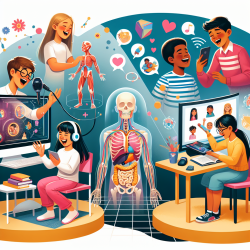The COVID-19 pandemic has significantly impacted various professional fields, including creative arts therapy. A recent study titled "Loss, adaptation and growth: The experiences of creative arts therapists during the Covid-19 pandemic" provides valuable insights into how creative arts therapists navigated the challenges posed by the pandemic. This blog will explore key findings from the study and suggest strategies for practitioners to enhance their tele-therapy sessions.
Key Findings
The study, which involved interviews with 20 creative arts therapists from around the globe, identified three main themes:
- Losses: Therapists experienced a sense of loss related to the absence of physical space, direct interaction, and nonverbal communication.
- Adaptations: Creative arts therapists developed innovative strategies to adapt their practices to the online environment.
- Innovations: The pandemic served as a catalyst for professional and personal growth, leading to new methods and broader access to therapy.
Strategies for Enhancing Tele-Therapy
1. Utilize Creativity as a Resource
Therapists found that their inherent creativity was a significant asset in adapting to the new tele-therapy environment. Engaging in creative problem-solving can help in developing new methods that are effective even in a virtual setting.
2. Adapt Methods to the Online Setting
Adapting traditional therapy methods to the online environment is crucial. For instance, dance movement therapists can focus on nonverbal cues visible on screen, while art therapists can use digital drawing tools to maintain engagement.
3. Use Grounding Techniques
Grounding techniques such as mindfulness and breathing exercises can help clients feel present and connected during online sessions. These techniques can also be beneficial for therapists themselves.
4. Create a Safe Virtual Space
Establishing a safe and consistent therapeutic environment online is essential. This can involve setting clear boundaries and ensuring privacy for both the therapist and the client.
5. Leverage Digital Resources
Exploring digital tools and resources can enhance the therapy experience. Virtual backgrounds, digital drawing boards, and other online features can add a new dimension to therapy sessions.
Encouraging Further Research
The study highlights the importance of ongoing research to understand the long-term effects of tele-therapy and to develop best practices. Practitioners are encouraged to engage in research activities to contribute to the growing body of knowledge in this field.
To read the original research paper, please follow this link: Loss, adaptation and growth: The experiences of creative arts therapists during the Covid-19 pandemic.










